Diving Tasmania… The “Apple Isle” is, in so many ways, the hidden gem of Australian scuba diving. And getting to know a bit more about it has been one of the highlights of my personal diving career!
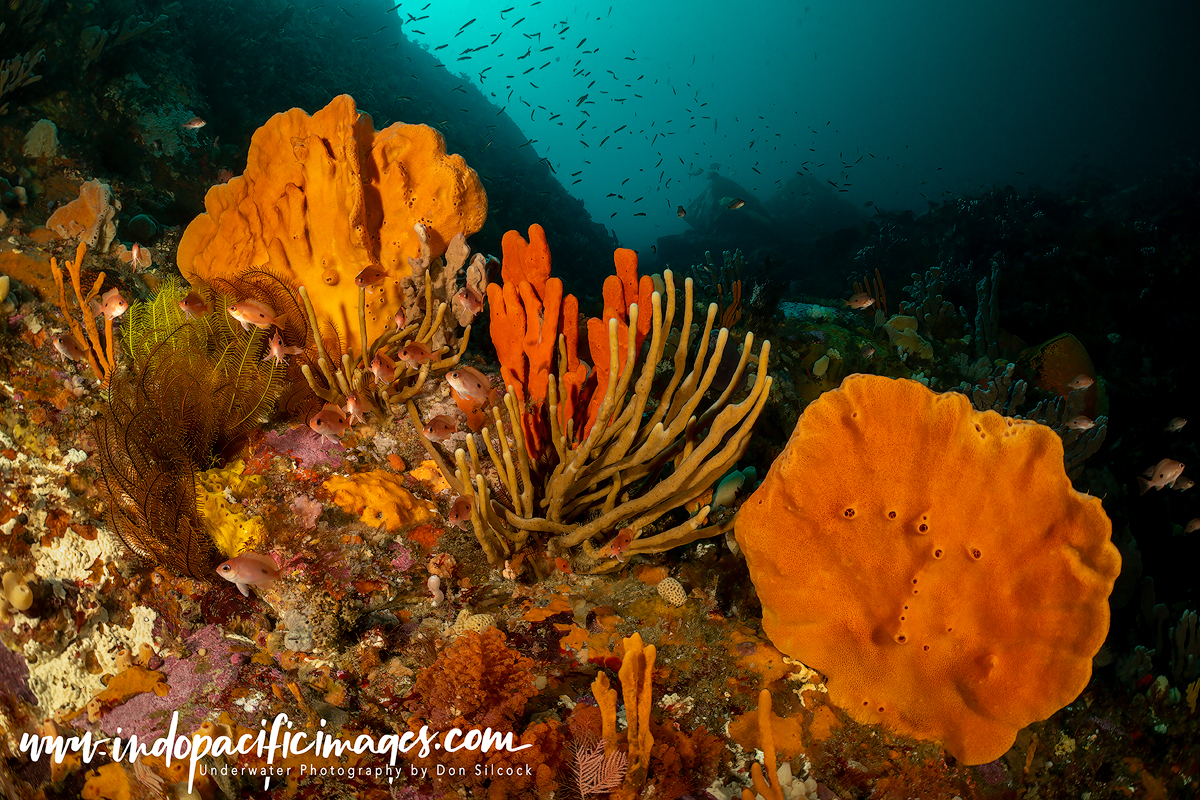
There really is a lot to see underwater around Tasmania. But the reality is you would need a couple of months, together with a significant budget to explore it all. My dive buddy and I only had a couple of weeks… So we reached out to various local divers to get their recommendations.
This is what we learned about the “must do” locations. And, looking back I think we got it about right. But first of all let’s start with why Tasmania deserves a place on your bucket list!
Diving Tasmania – The Apple Isle
 While the island of Tasmania is the smallest of the Australian states. It’s not an insignificant area of land and is infact roughly one third the size of Victoria. Or, put another way, it is slightly bigger than Florida and ten times the size of Bali.
While the island of Tasmania is the smallest of the Australian states. It’s not an insignificant area of land and is infact roughly one third the size of Victoria. Or, put another way, it is slightly bigger than Florida and ten times the size of Bali.
Its isolated location off the south-east coast of continental Australia – the “mainland” as Tasmanians like to call it – means that it is surrounded by the Southern Ocean and its cool, nutrient-rich waters. And those cold waters support a rich ecosystem. Which include kelp forests, seagrass meadows, extensive coral reefs and sponge gardens.
Plus, to the north-east of the island the Southern Ocean meets the East Australian Current. Creating a mixing zone where both warm and cold-water species coexist, Further enhancing the already high level of species biodiversity. Overall that biodiversity has been quantified at approximately 4,000 marine species, with many more yet to be discovered.
But… the island’s location also means it is right in the “Roaring Forties”. And those strong westerly winds expose the island to a very dynamic weather regime. Add in the rapidly moving weather fronts generated by the Southern Ocean. So it’s no wonder that Tasmanians like to joke about their weather forecast: “bring a jacket, an umbrella, some sunscreen – and a snow shovel just in case”.
The Plan is, there is No Plan…
A really key source of information as we planned the trip was Karen Gowlett-Holmes, the co-owner of Eaglehawk Dive Center. Karen is a marine biologist who specialises in temperate water biodiversity. She formerly worked at the CSIRO and has had a dozen new marine invertebrate species named after her.
Karen is extremely knowledgeable, helpful and really passionate about Tasmania! She is also very pragmatic and warned us that the weather would dictate if, and where we could go diving. So we had to be prepared to dodge and weave as the conditions dictated. Which led to the decision to set up basecamp at Eaglehawk Neck. So we could dive the area whenever the prevailing weather allowed. With side trips to the other key locations we had identified as must-do’s for the trip – Bicheno and the Derwent River in Hobart, when conditions did that dictating…
Diving Tasmania – Eaglehawk Neck
The east coast of Tasmania is renowned for its natural beauty. And one of the most picturesque regions is the south-east corner with its Forestier and Tasman Peninsulas.
Eaglehawk Neck is the narrow isthmus that joins those two peninsulas. And the small town of the same name is the gateway to the most exhilarating dives we experienced in Tasmania.

It is also home to Eaglehawk Dive Center (EDC) ran by Karen Gowlett-Holmes and Mick Baron. Who, between them, probably know more about the diving in south-east Tasmania than anybody.
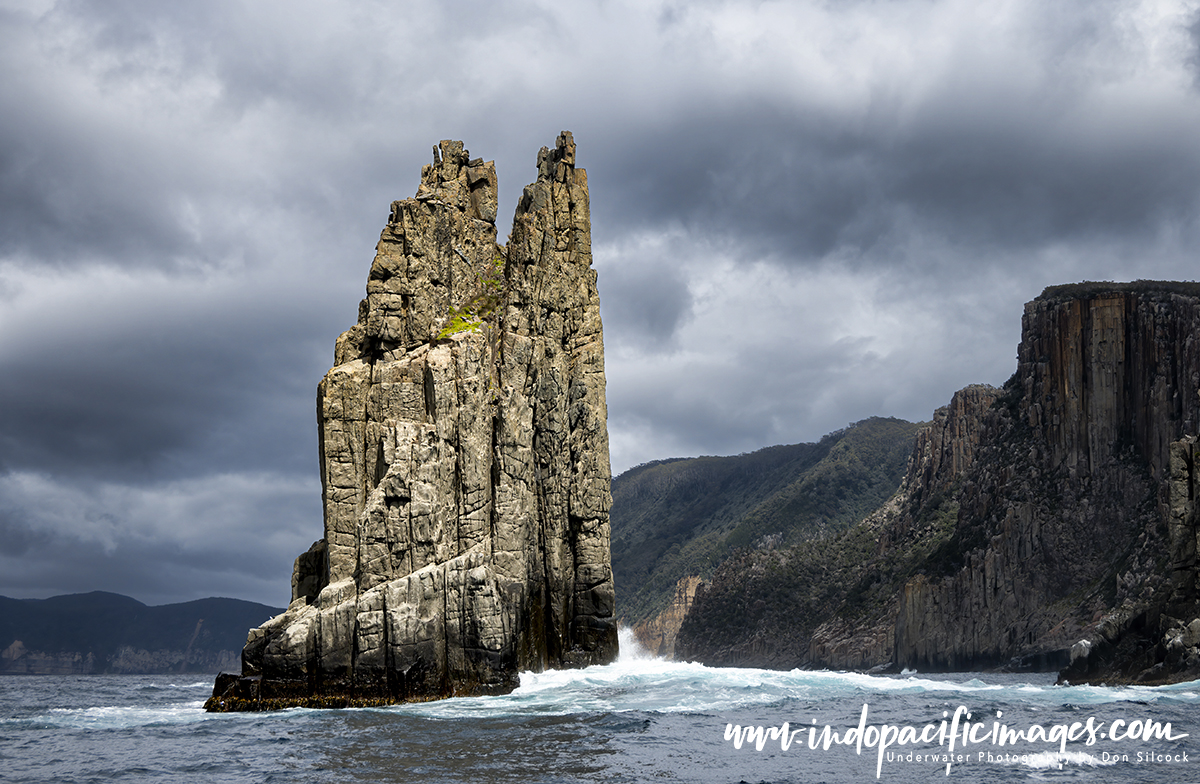 Mick drives the EDC boat and gets you to the sites that he knows the prevailing weather will allow you to dive safely. But “driving” does not really describe what Mick does with the boat…
Mick drives the EDC boat and gets you to the sites that he knows the prevailing weather will allow you to dive safely. But “driving” does not really describe what Mick does with the boat…
“At one” or maybe “integrated with” would perhaps better illustrate that relationship. The point is that to safely dive the best sites in and around Eaglehawk Neck you need somebody who really understands them. And, most importantly, how the weather and water conditions on the day are affecting them at that point in time.
Mick does that with a level of skill that simply instils confidence that it’s going to be OK… You are, after all, diving an area that few humans go to. So knowing that you are being dropped in at the right place at the right time is not an insignificant thing!
Eaglehawk Highlights – Cathedral Cave:
Located in Waterfall Bay on the north-east tip of the Tasman Peninsula, and just a short boat ride from Eaglehawk Neck, Cathedral Cave is a truly an exceptional dive that is both inspirational and (if I am brutally honest…) a bit intimidating…
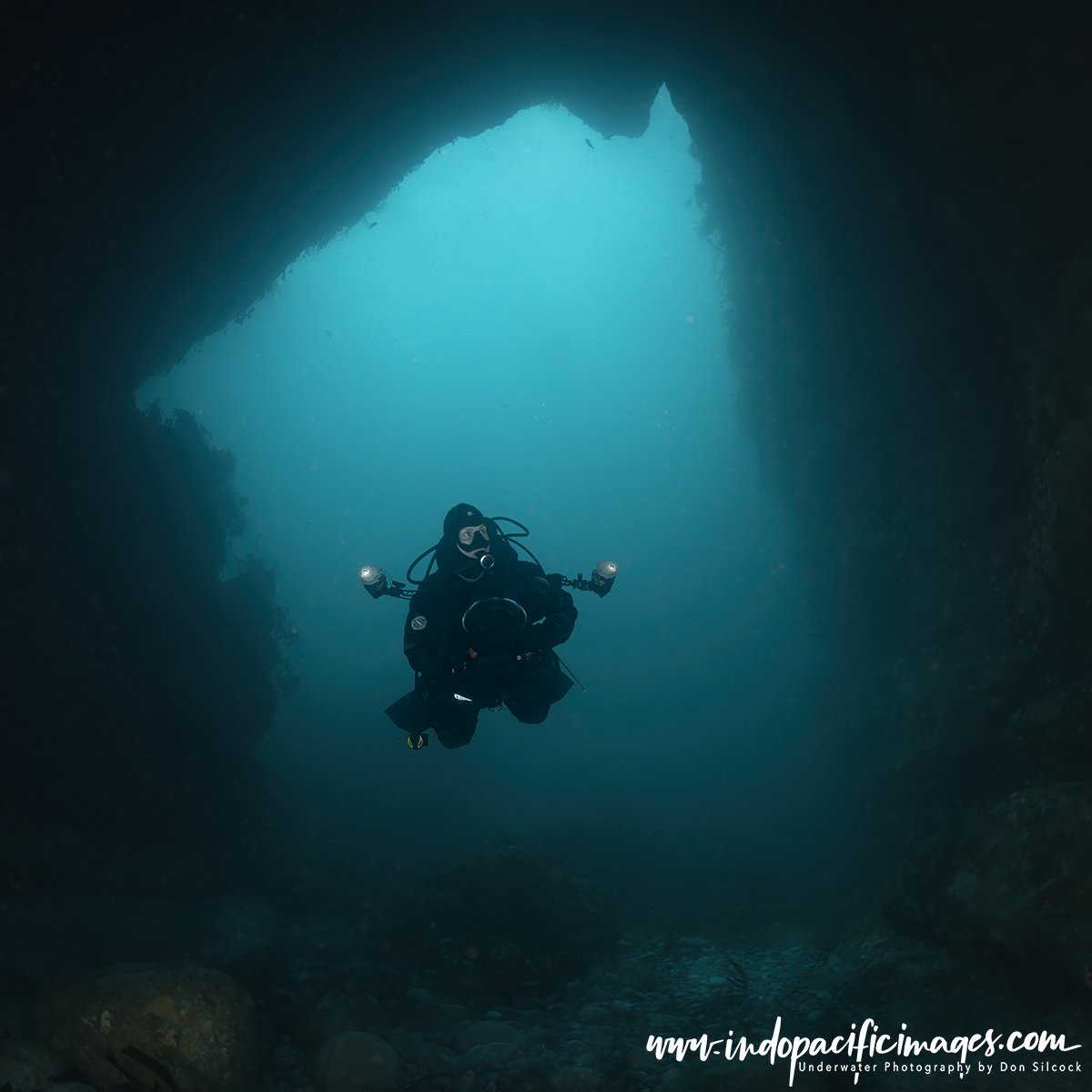
The site takes its name from the cathedral like archway that is the main entrance into what becomes an extensive series of caves and tunnels. So large it is the biggest sea cave system in Australia.
That huge and very photogenic main entrance leads to a wide tunnel-like passage with a maximum depth of around 21m. The walls of the tunnel are covered with brightly coloured invertebrates.
Interestingly, many of those invertebrates are normally found in much deeper water.
Overall, the ambience in the entrance area and tunnel is 100% inspirational. As natural light entering from the archway is starting to fade but there is still enough to illuminate where you are.
Leading off from the entrance passage are various smaller caverns with many narrow tunnels and cross passages.
Which is where it starts to get a bit intimidating as very little light reaches that far and it’s at this point you either need a guide to safely lead you through or return on another day as a qualified cave diver!
Eaglehawk Highlights – The Sisters
In terms of sheer exhilaration, without doubt the very best dives we did in Tasmania were at the Sisters Rocks.
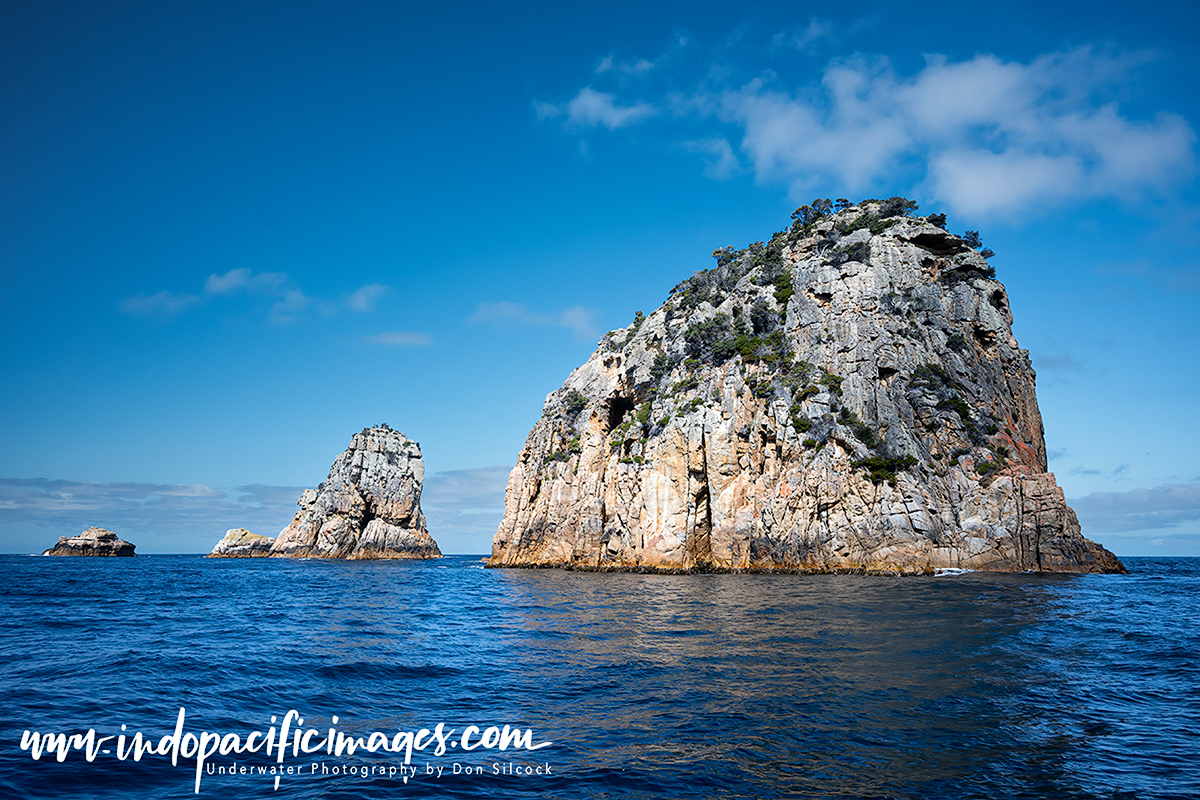
They are located about 9km north-east of Eaglehawk Neck just offshore from Cape Surville on the eastern tip of the Forestier Peninsula. Only accessible by boat, the Sisters are a series of magnificent pinnacles surrounded by deep water.
Because of their exposed location the weather dictates when they can be dived. But when that window opens it provides a special opportunity to dive what can only be described as an absolutely magnificent location!
The very best diving is on the eastern/seaward side of the “Outer Sister” pinnacle. While the upper 20m is interesting, the whole thing really starts to bloom from about 30m.
At about 35m it’s hard to believe the intensity of colour and marine life that is there in front of you. It’s almost like one of those immaculate show houses on display at a new housing development. But this showhouse is for the Southern Ocean and temperate water biodiversity!
The walls and bommies are completely covered in beautiful anemones, soft corals and sponges. While in between are rich sea whip gardens and patrolling above are large schools of butterfly perch.
We were fortunate to do a few dives at the Sisters Rocks. They were all exceptional, but the thrill of the first dive there was the very best. There I was in deep temperate water in a dry suit with a heated vest keeping me warm. But in front of me were the vibrant colours and intense biodiversity you would automatically associate with tropical locations like Raja Ampat in Indonesia and the Bismarck Sea in PNG!
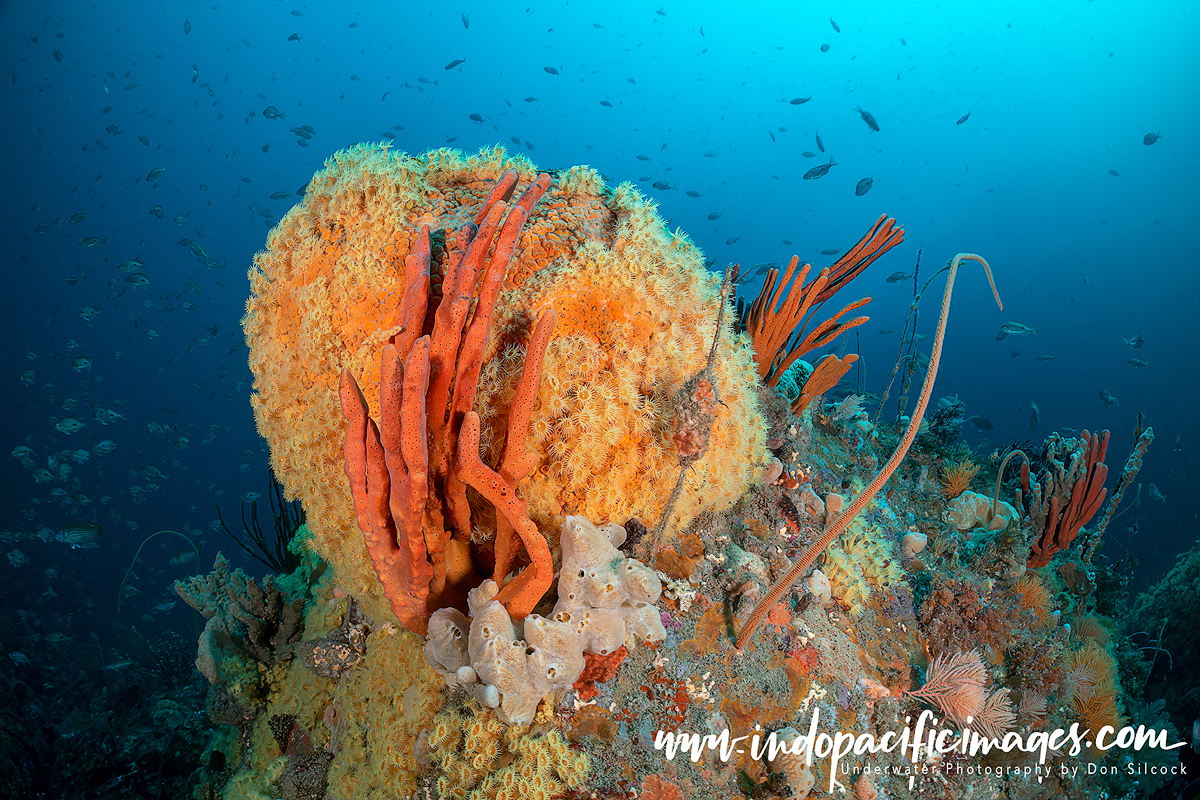
Eaglehawk Highlights – The North Wall
Another boat-only dive, the North Wall is an excellent site in its own right. But can also be thought of (in my mind anyway…) as “the Sisters Lite” as it’s a great alternative when the weather is not cooperating.
It is located about 7km to the north-east of Eaglehawk Neck at Deep Glen Bay on the Forestier Peninsula. The North Wall forms the northern side of the bay where it comes to an end and merges back in with the coastline.
The wall is rich in colourful sponges, beautiful sea whips and many invertebrates. Plus the chance of random encounters with New Zealand fur seals and Weedy Seadragons.
Diving Tasmania – Bicheno
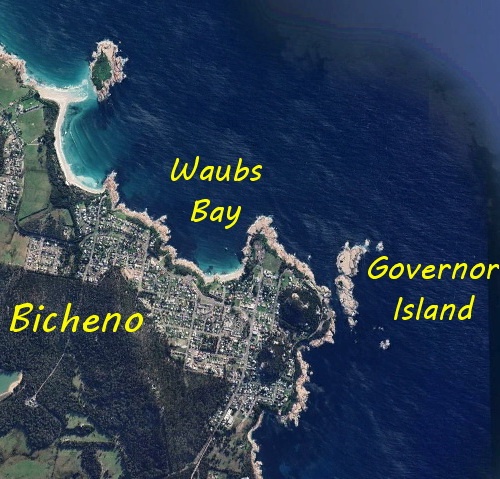
The small, scenic town of Bicheno was a three-hour drive from our Eaglehawk Neck basecamp. And the two days of the trip that we made that return journey were long, but very rewarding ones!
There was not much choice but to drive as the local dive shop, Bicheno Dive Center, closed during the pandemic. So tank fills would be an issue if we moved stayed in Bicheno. No local shop also meant that access to the sites at the tantalisingly close Governor Island was not possible either…
Governor Island was one of the first Tasmanian marine reserves when established in 1991. And there are some 35 dive sites in the reserve area that covers the north, east and southern waters around the island.
A bit of research on those sites makes certain names stand right out. Starting with the Hairy Wall and its granite cliff-face, rich in sea whips, that plunges down to 35m. Then there is the Castle and its swim-through between two massive granite boulders that is lined with sea whips, yellow carpet coral zoanthids and teeming bullseyes, cardinalfish and banded morwong!
But, possibly the best of all are the Golden Bommies with the two 10m high pinnacles glowing with yellow zoanthids and sea whips.
Just 50m separates Governor Island from Bicheno. And, as tempting as it was to try and dive from the shore, there are clear warnings not to even try because of the frequent boating traffic, strong currents and swells.
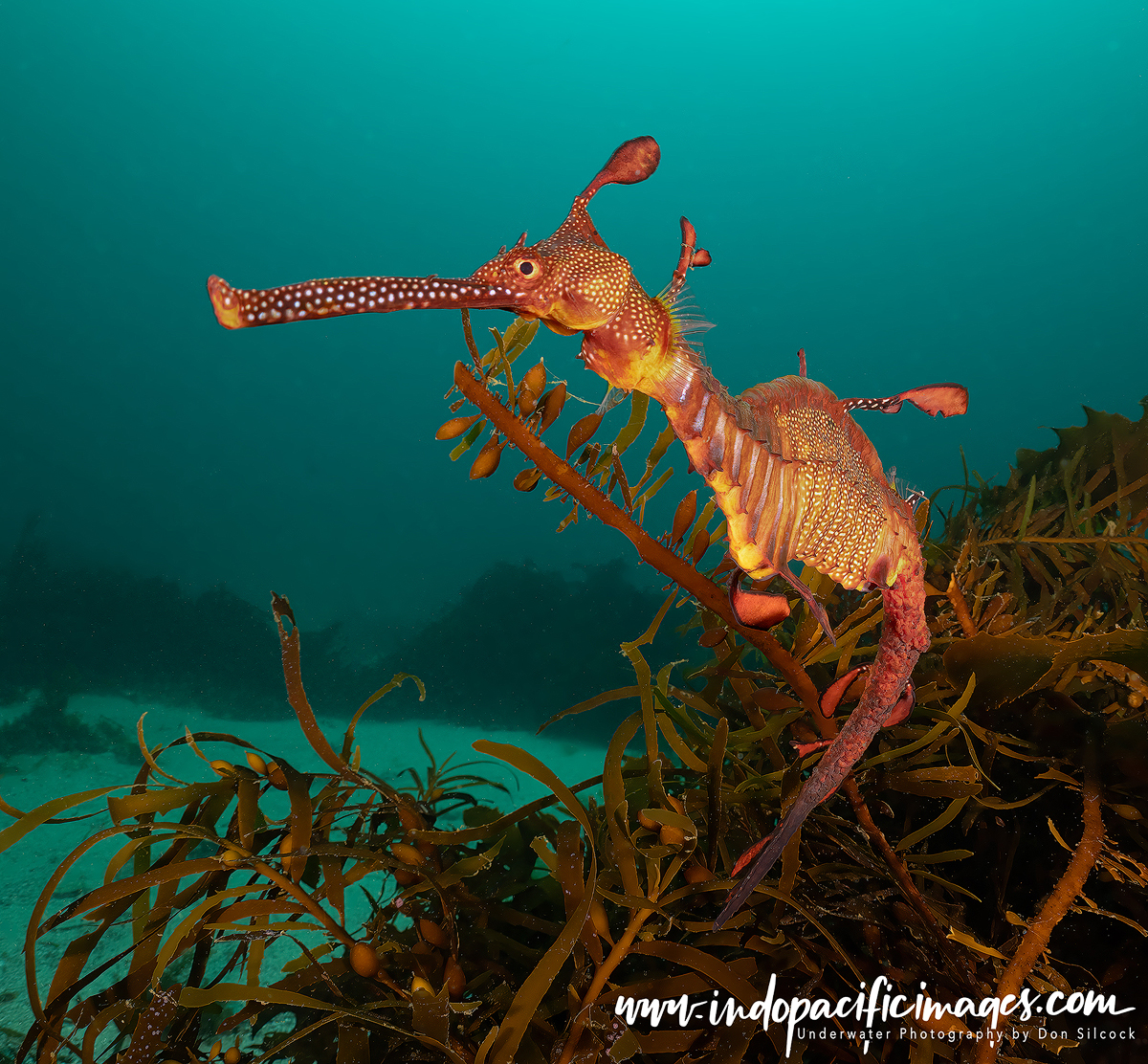
Waubs Bay
Our consolation prize was a total of four dives in this really nice bay that Bicheno is located around.
We had been advised that the best part was the eastern side where easy entry was possible near the boat ramp and breakwater.
It turned out that the Waubs Bay was an excellent second prize.
So good infact that we did the second day trip, with its six-hour round journey, very willingly as there was just so much to see!
Top of the list being the wonderful Tasmanian weedy seadragon, followed by numerous stingrays including the very photogenic banded stingaree.
Plus lots of crabs, scorpionfish and cuttlefish.
Apparently Waubs Bay is an even better at night than it is in daytime!
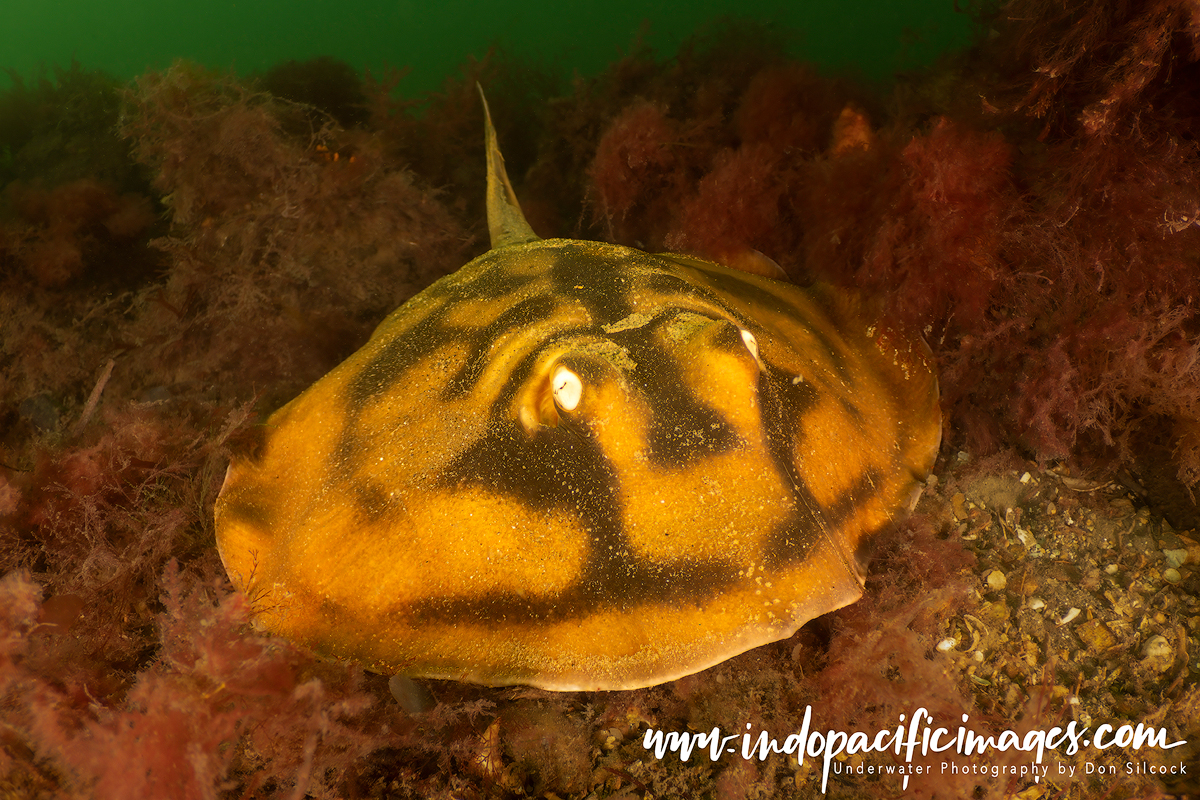
Diving Tasmania – Hobart
Our third “must do” was to try and photograph the very unique Tasmanian handfish. Superbly described on the Handfish Conservation Project website as follows: “If you’ve never seen a handfish before, imagine dipping a toad in some brightly coloured paint, telling it a sad story, and forcing it to wear gloves two sizes too big”…
Handfish are small, egg-laying creatures that are among the world’s rarest fish. A total of 14 species of handfish have been identified. But it is only in Tasmania that several of them could be found at recreational diving depths. Unfortunately, only two of those species, the Spotted and the Red Handfish, are still to be found. And the rest of the species are either locally extinct in shallow water or only exist in deep water.
Both the Spotted and the Red Handfish are listed as Critically Endangered (extremely high risk of extinction in the wild) on the IUCN Red List.
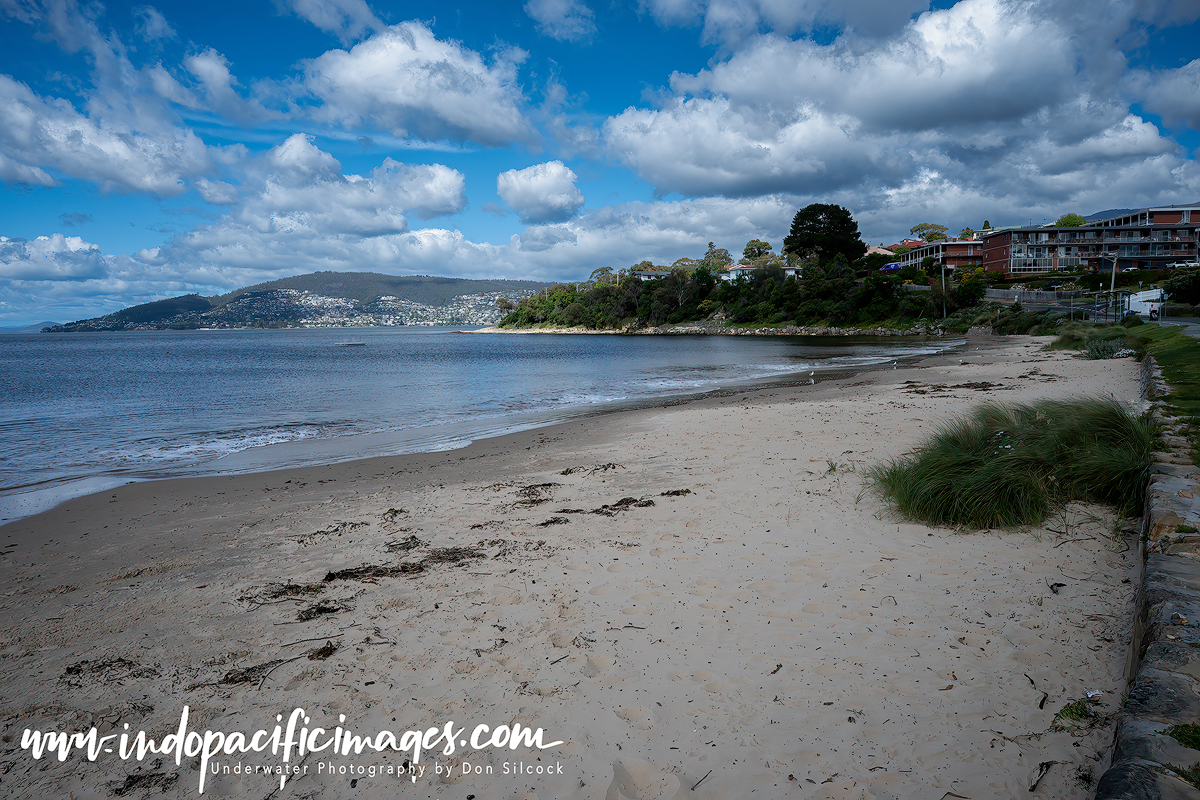
And it is estimated there are fewer than 70 Red Handfish and no more than 3000 Spotted Handfish left in the wild.
We went looking for Spotted Handfish at two locations in Hobart’s Derwent River in conditions that are best described as “challenging” – damn cold and less than 2m visibility! So, you can imagine my utter amazement when I found one on my second attempt!
Having been briefed on the rules of engagement I made sure my buoyancy was good, I did not get too close and only took the recommended maximum of five images to avoid stressing the creature.
I stayed with the Spotted Handfish for about 20 minutes after taking my images, fascinated by its shape, structure and those incredible “hands” – truly an intriguing creature!
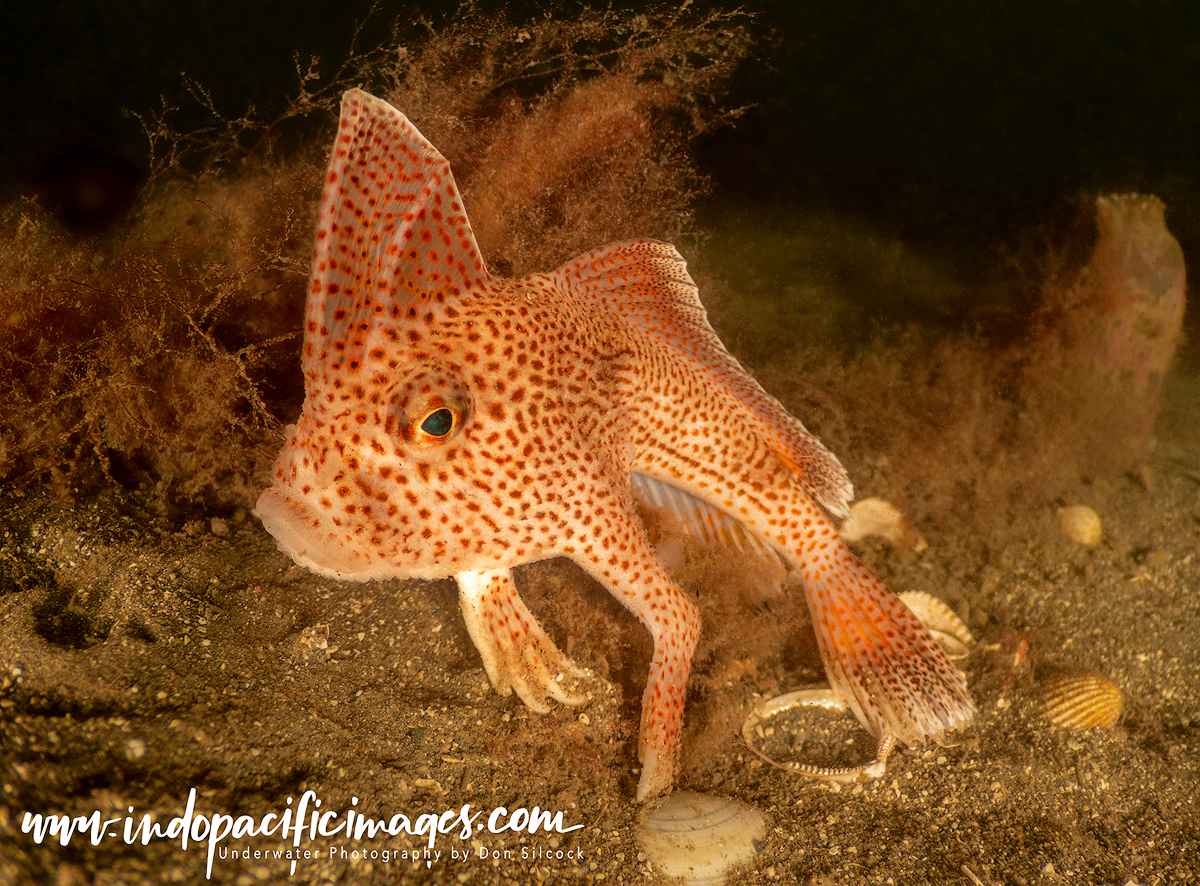
Diving Tasmania – In Summary…
Tasmania has one of the world’s most biologically diverse and unique marine environments. The diving can be magnificent when the weather gods are happy. But, and it’s a big but… the conditions can be challenging. It’s cold, many of the sites are quite deep and your diving skills are tested often. It can also get expensive because its mainly boat diving plus car rental, accommodation and food costs add up quickly.
So… is it all worth it? Absolutely it is – the combination of incredible underwater scenery, unique creatures and teeming biodiversity make it worth every penny, and I am already planning my next trip!
Top of my list for next time are getting back to Eaglehawk Neck to experience the Sisters again and to dive the wreck of the SS Nord. Plus, I need to find a way to dive some of those Governor Island sites I read so much about.
And… I would love to see one of those 70 Red Handfish!
Scuba Diver Article
Scuba Diver magazine recently published a six-page article of mine on Diving Tasmania – A Guide and you can use the link to download a copy of it.

